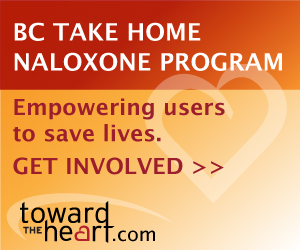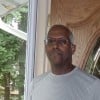- HubPages»
- Health»
- Mental Health»
- Addiction»
- Alcoholism
Narcan: A Highly Effective Antidote for Heroin Overdose
Introduction
Heroin has been in the news lately, especially with the recent death of Philip Seymour Hoffman. Furthermore, the use of heroin in the United States and in other countries have been on the rise among people of all socioeconomic levels and is now at epidemic proportion across the globe. Why? The drug is inexpensive and relatively easy to obtain alternative to expensive prescription drugs that have the same psychoactive or narcotic effects in the body. If law enforcement officials had found Mr. Hoffman in time, there is a high possible that they could have saved him with an injection of the drug called Naloxone, commercially called Narcan. It is a drug that is reported to reverse close to 97% of heroin or other opioid drug overdoses if the victim is found in time, usually within one to three hours before breathing ceases. Right now many cities are initiating programs to equip first responders with Naloxone in an effort to save many more lives from the heroin epidemic that is rapidly spreading across the globe.

Accessibility of Naloxone
Do you think Naloxone should be in the hands of:
Brief History of Naloxone
Naloxone is an old drug and is commercially available as a prescription drug by the name of Narcan. It was first synthesized in the 1960s by Sankyo, a Japanese pharmaceutical company, but it was not until 1983 when two scientists, Jack Fishman of Rockefeller University and Harold Blumberg of New York Medical Center, were awarded the 1982 John Scott Award for their research on Naloxone. It was their research that determined that Naloxone, as stated in their paper, was a “potent, rapid-acting, and relatively pure narcotic antagonist.”
The Effects of Naloxone on the Body
The Narcan medication is a prescription drug used as an opioid antagonist to reverse the effects of an overdose from opioid drugs. Naloxone, as an antagonist, competes for the same opioid receptors in the brain and the rest of the nervous system as opiate drugs do, such as heroin and morphine. When these drugs are in the body simultaneously, Naloxone occupies these receptor sites more readily than other opioid drugs, since it has a higher affinity with these sites. Because opioid drugs act as a depressor to the respiratory system and the nervous system, the slowing down of the breathing rate is the first obvious sign of a change in the physiological activities of the body after an injection of an opioid drug. This effect is reversed because of Naloxone’s higher affinity to these receptors and in essence it knocks off the heroin molecules from these sites and then attach itself to these receptors. This action also blocks the remaining heroin molecules in the bloodstream from attaching themselves to these receptors. The heroin molecules left in the bloodstream are eventually metabolized and excreted from the body.
Narcan is a very effective reversal for opioi drug overdoses. It is generally given to an heroin overdosed victim by injection, since this is the fastest route to get the drug in the body. Once it is in the body, the heroin overdose symptoms manifested by the victim begins to disappear within minutes and the drug continues this reversal process for 45 to 90 minutes after it is administered to the victim.
Do you die from heroin overdose? The answer is sometimes. One thing that people must understand is that once a person overdoses with opioid drugs, it is not always a fatal one. Generally, the victim is unconscious and is still breathing, but at a very slow rate. So when they are found by first responders within one to three hours, there is a very good chance they can be revived if Narcan is available for immediate treatment. However, there are cases where an overdose of heroin is immediately fatal.

Quick Facts About Naloxone
- It is a safe and effective drug to reverse heroin overdose
- It is inexpensive
- Approximately 97% effective rate in reversing heroin overdose
- It reverses drug addiction
- It reverses opioid drug induced comas in minutes
Other Uses for Naloxone
Naloxone is a very important antagonist for many reasons, the main one being is that it reverses suppressed respiratory functions caused by natural and synthetic opioid substances. It is also used mainly to reverse addictions to opioid drugs, especially heroin. Naloxone can be used for other medical purposes because of its ability to reverse the effects narcotic have on the nervous system. When used this way many addicts say the withdrawal symptoms manifest immediately and are very unpleasant.
It is commonly used with other drugs to reverse the effects of anesthetic drugs used during surgery to depress the respiratory function and to relax the muscles while a patient is under anesthesia. Since patients are put under anesthesia to prevent the sensation of pain during surgery, Naloxone is often used to treat people with a rare condition called hereditary sensory and autonomic neuropathy type IV, where they are unable to feel pain and other sensations that we take for granted such as the feeling sensations of hot and cold. Also people with this condition do not sweat, which also means it can be use to treat this problem. Sometimes Naloxone is used as a drug to reverse comas, specifically those brought on by an overdose of opioid drugs. The patient generally comes out of opioid drug induced coma in a few minutes after receiving an injection of Naloxone. But like other prescription drugs, there is always two sides to how drugs behave in the body, a beneficial effect and unwanted side effects, during prolong use.
International Stats on Deaths From Heroin Overdose
- 38,329 deaths from overdose reported in the United States in 2010.
- More than 70,000 people in Europe have lost their lives to drug overdose in the first 10 years of the 21st century;
- 6,623 overdoses occurred in Australia between 2005 to 2006. Children four-years-old or less made up 1,325 of those cases.
- More people died in Estonia in 2011 from drug related incidents (123) than from traffic accidents (101).
- Prescription drug abuse was the number-one cause of death in 17 states in the U.S. in 2012.
- Ever 30 minutes, at least one victim of heroin overdose dies in the United states.
Sources: Center for Disease Control (CDC), American Society of Interventional Physicians,
The United Nations Office on Drugs and Crime (UNODC)
National Drug and Alcohol Research Centre University of New South Wales.
Side Effects of Narcan
Narcan is considered a safe drug for one-time use, but when utilized for longer periods, Narcan does have many side effects because of its ability to depress the functions of nervous system and the respiratory system. Patients may experience side effects, such as chest pains, fast or irregular heartbeats. Even though Naloxone improves the respiratory function of overdosed victims, ironically, the drug can cause a drop in heart rate and breathing rate, and in some cases the patient may stop breathing. A few patients may experience hypotension and hypertension since the drug effects the heart rate and if the symptom of hypotension is serious, the patient may even pass out.
Earlier, I mentioned Naloxone is used occasionally to treat patients for addictions to narcotics. Patients may experience some of the classic symptoms of withdrawal, such as diarrhea, stomach pains, nausea, runny nose, fever and chills.


States with the highest overdose death rates per 100,000 people in 2010, according to the National Center for Health Statistics:
- West Virginia (28.9)
- New Mexico (23.8)
- Kentucky (23.6)
- Nevada (20.7)
- Oklahoma (19.4)
- Arizona (17.5)
- Missouri (17)
- Tennessee )16.9)
- Utah (16.9)
- Delaware (16.6)
Demand for the Distribution of Naloxone
Even though this drug has been around since the 1960s, many first responders, medical personnels, and politicians are just beginning to realize; that Naloxone is a potential lifesaver for many victims of heroin overdose. The problem is many first responders who are generally the first on the scene of overdose victims do not have Naloxone on hand to treat these victims immediately. Since time is of essence, this would be an important first step in saving many lives if they are properly equipped with this life saving drug. Some cities are beginning to take this step since federal drug officials are encouraging more widespread use of Naloxone to treat heroin overdose victims. The drug czar R. Gil Kerikowske favors expanding the availability of this drug. He told reporters of the Los Angeles Times that “co-prescribing to both the person who is going through the disease of addiction and to the relatives and significant others can be very helpful.” Another proponent to make Naloxone more available is Lynne Lyman, California state director for the Drug Policy Alliance said, “We have a powerful weapon against drug overdoses.”
Police officers in the town of Quincy, a Boston suburb, know all too well how effective Naloxone is in reversing opioid drug overdoses. Since carrying the nasal form of this drug, officers there had reversed 211 of the 221 overdose cases that they have encountered since October 2010. In other words they have saved 95% of the victim from overdoses. However, Naloxone does not work on all overdoses because it only reverses overdoses from opioid drugs.
In Ocean county, New Jersey deaths from heroin use have doubled from 53 in 2012 to 112 in 2013. The county has started training officers to use Naloxone. The spokesperson there said, “the officers don’t want to be standing there helpless waiting for EMS.” Naloxone is a safe and effective drug as stated by many doctors if administered to the victim in time. Dr, Ken Lavelle, an emergency room physician and EMS director in the Pennsylvania and New Jersey area said, “There is zero risk. It’s so safe I can squirt it up my nose right now and it won’t do a thing to me.” Some officials said Naloxone nasal spray could be handed out to heroin users like they handed out condoms to prevent the spread of AIDS, but some critics worry that this move may encourage more people to use heroin. This is the thinking Republican Governor of Maine Paul LePage has about distributing it in this manner. He opposes a state bill that would make it possible for first responders and relatives of addicts to have Naloxone in their hands.
Furthermore, the drug is so effective and safe for this use that there is a program in Wilkesboro, North Carolina called “Project Lazarus” that gives out Naloxone Nasal Spray for free. The organization is a secular, non-profit organization that provides technical assistance to clinicians and community groups throughout the state. They believe every overdose is preventable. As we can see, there is a big push to put this drug in the hands of all first responders throughout the United States and the rest of the world, to prevent these needless deaths so that they can have a second chance.
Remember International Overdose Awareness Day is observed on August 31.
Additional information:
I published this article on February 16, 2014, to increase awareness about this drug. The FDA officials finally approved an injectable, consumer version of this drug, Ezvio, for distribution on April 3, 2014, to help save more lives from heroin or opioid painkiller overdoses. Unfortunately, the drug is not legal in every state for distribution. The drug will be given to caregivers, co-workers and family members to help stop the heroin overdose epidemic.










